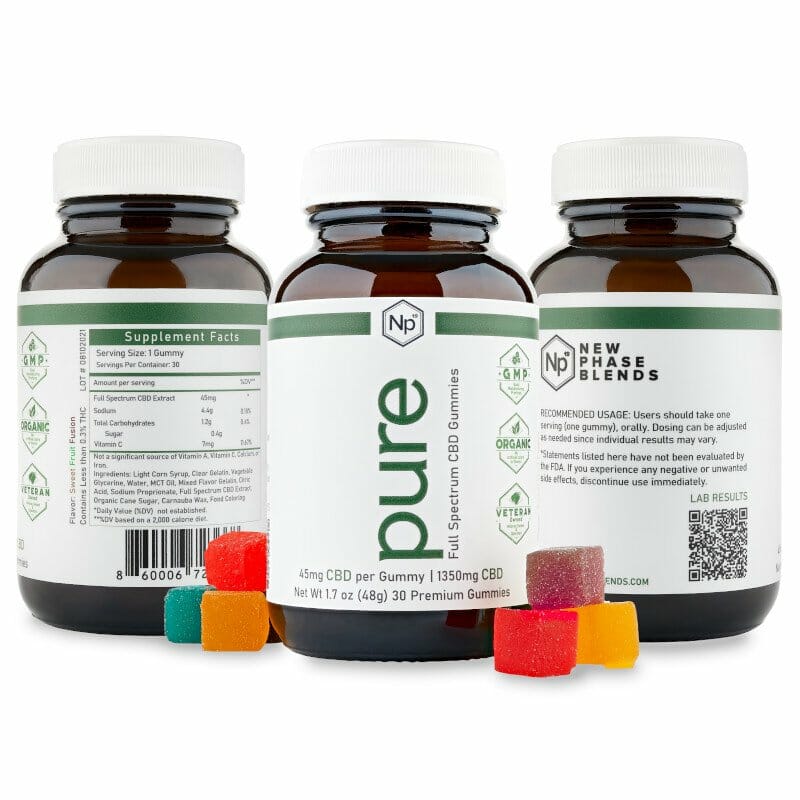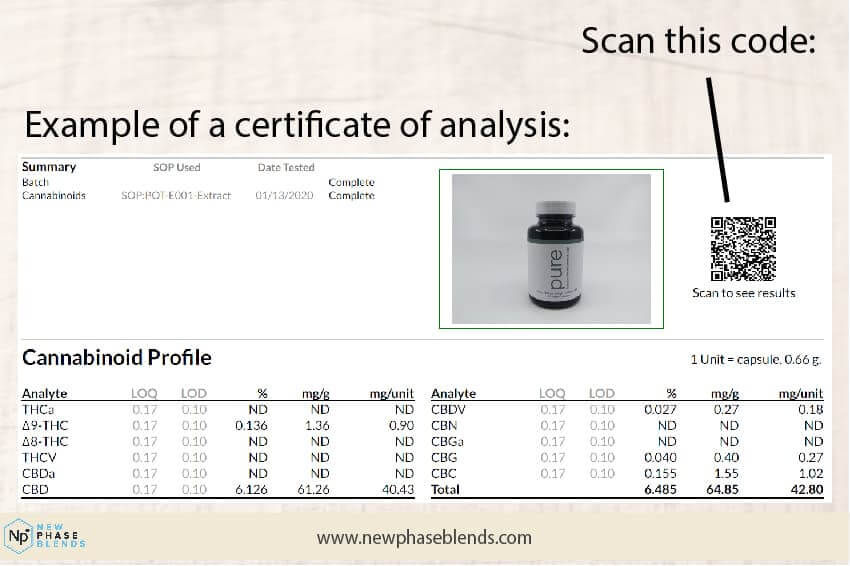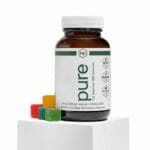Living with pain can be debilitating, affecting everything from your mood to your ability to perform daily tasks. If you’re among the millions searching for natural alternatives to traditional pain management, CBD gummies have likely appeared on your radar. As someone who has spent years researching and writing about natural wellness solutions, I’ve seen firsthand how CBD products have transformed pain management approaches for many individuals.
In this comprehensive guide, we’ll explore how CBD gummies may help with pain relief, what science says about their effectiveness, and how to choose the right product for your specific needs. Whether you’re dealing with chronic pain, occasional discomfort, or seeking preventative options, this article will provide you with actionable information to make informed decisions about incorporating CBD gummies into your pain management strategy.
Understanding CBD and Its Pain-Relieving Properties
What Exactly Is CBD?
Cannabidiol (CBD) is one of over 100 compounds found in the Cannabis sativa plant. Unlike its counterpart THC (tetrahydrocannabinol), CBD doesn’t produce psychoactive effects – meaning it won’t get you “high.” This distinction has made CBD an appealing option for those seeking pain relief without mind-altering effects or pharmaceutical side effects. Many people turn to CBD specifically because it offers potential therapeutic benefits without the intoxication associated with cannabis use.
How CBD May Help With Pain
CBD interacts with your body’s endocannabinoid system (ECS), a complex cell-signaling system that plays a role in regulating various functions, including pain, immune system responses, and inflammation. When you consume CBD, it may influence endocannabinoid receptor activity, interacting with neurotransmitters and potentially reducing inflammation. These interactions are believed to be responsible for CBD’s potential pain-relieving properties, though research continues to explore the precise mechanisms involved.

For pain management specifically, CBD shows promise through several mechanisms. The compound appears to have anti-inflammatory effects that may reduce pain triggered by inflammation, which is particularly relevant for conditions like arthritis or inflammatory bowel disease. CBD also interacts with serotonin receptors, which can influence pain perception and mood regulation, potentially offering dual benefits for those whose pain affects their emotional well-being. Additionally, research suggests CBD may modulate TRPV1 receptors involved in pain and inflammation regulation, providing another pathway for potential relief.
Type: Pure CBD Gummies
CBD: 45mg Per Gummy
Features: Free Shipping, Money Back Guarantee
Sara Johnson, who suffers from rheumatoid arthritis, shares her experience: “After trying numerous treatments with limited success, I introduced CBD gummies into my routine. Within two weeks, I noticed a significant reduction in joint pain and stiffness, especially in the morning. The consistency of taking a measured dose through gummies has made it easier to maintain as part of my daily wellness routine.”
Types of Pain CBD Gummies May Help Address
While research is ongoing, preliminary studies and anecdotal evidence suggest CBD gummies may help with several types of pain. Chronic pain conditions represent a significant area where CBD has shown potential, as its anti-inflammatory properties may help reduce the persistent discomfort associated with conditions like arthritis, fibromyalgia, and multiple sclerosis. Many users report sustained relief when using CBD consistently for these conditions.
Neuropathic pain, which results from nerve damage and often responds poorly to conventional treatments, may also benefit from CBD intervention. Some studies indicate CBD may help with nerve-related pain by influencing how pain signals are transmitted to the brain, potentially offering relief for conditions like peripheral neuropathy or post-herpetic neuralgia. The compound’s ability to interact with multiple receptor systems makes it a promising candidate for these complex pain conditions.
Inflammatory pain represents another category where CBD’s properties align well with potential relief. CBD has shown potential in reducing inflammation that causes pain in conditions like inflammatory bowel disease, post-exercise recovery, and various autoimmune disorders. By potentially modulating the immune response and reducing inflammatory markers, CBD may address both the symptoms and underlying causes of inflammatory pain.
Many users also report benefits for everyday discomfort like headaches, muscle soreness, and menstrual cramps. The accessibility and ease of use of CBD gummies make them particularly appealing for these intermittent pain issues, allowing users to address discomfort without the side effects associated with common over-the-counter pain medications.
The Science Behind CBD for Pain Relief
While anecdotal reports about CBD’s effectiveness for pain are abundant, it’s important to understand what scientific research has uncovered. The field continues to evolve rapidly, with new studies providing increasingly sophisticated insights into how CBD affects pain pathways.

Current Research Findings
Research on CBD for pain management is still developing, but early findings are promising. A 2020 review published in the Journal of Clinical Medicine found that CBD may be effective for certain types of pain, particularly when used consistently over time rather than as a single-dose intervention. The researchers noted that CBD’s multi-target approach might offer advantages over single-mechanism pharmaceutical approaches, though they emphasized the need for more clinical trials with standardized methodologies.
Another study from the European Journal of Pain showed topical CBD application helped lower pain and inflammation in arthritis models. While this study focused on topical application rather than ingestion methods like gummies, it provided important evidence of CBD’s local anti-inflammatory effects, which are also relevant when the compound is absorbed systemically through oral consumption. The study suggested that CBD doesn’t just mask pain but may address underlying inflammatory causes.
For neuropathic pain specifically, a 2018 review in Frontiers in Pharmacology highlighted CBD’s potential to suppress chronic inflammatory and neuropathic pain without causing analgesic tolerance. This is particularly significant because many conventional pain medications become less effective over time as patients develop tolerance, requiring increased dosages and risking side effects. CBD’s apparent lack of tolerance development suggests it might be suitable for long-term pain management strategies.
What Makes CBD Gummies Different
CBD gummies offer several advantages over other forms of CBD for pain management. The format provides consistent dosing, as each gummy contains a precise amount of CBD, eliminating the guesswork that can come with oils or homemade formulations. This predictability is especially valuable for pain management, where finding and maintaining an effective dose is crucial for sustained relief.
When consumed orally, CBD undergoes the digestive process, potentially providing more sustained relief compared to methods like vaping. While vaporized CBD may offer faster onset, the effects typically don’t last as long. Gummies release CBD gradually as they’re digested, which can provide longer-lasting effects that may be more appropriate for ongoing pain conditions rather than acute flare-ups requiring immediate relief.
Convenience and discretion represent another significant advantage of the gummy format. Gummies can be taken anywhere without drawing attention or requiring special equipment, making them suitable for maintaining your pain management routine at work, while traveling, or in social situations. The familiar candy format also removes the stigma that some might associate with other CBD products.
The pleasant experience of consuming gummies shouldn’t be overlooked as a factor in consistency of use. The sweet flavor masks CBD’s natural earthiness, making it more palatable for regular use. This can be particularly important for long-term pain management, where adherence to a regular regimen often determines effectiveness.
Choosing Effective CBD Gummies for Pain Relief
Not all CBD gummies are created equal, especially when it comes to pain management properties. The market offers numerous options that vary considerably in quality, potency, and formulation. Understanding how to evaluate and select products most likely to address your specific pain concerns can make the difference between finding relief and wasting resources on ineffective options.

Key Factors to Consider
When selecting CBD gummies for pain, you’ll encounter three main types of CBD products, each with different potential benefits. Full-spectrum CBD contains all cannabis plant compounds, including trace amounts of THC (less than 0.3%), which may enhance effectiveness through the “entourage effect” – a phenomenon where multiple cannabis compounds work together synergistically to produce greater effects than isolated compounds. For many pain sufferers, this full-plant approach provides more comprehensive relief, though the presence of THC, even in small amounts, is an important consideration.
Broad-spectrum CBD contains multiple cannabis compounds but no THC, offering a middle ground for those who want the benefits of multiple cannabinoids without any THC exposure. This option may be preferable for individuals who undergo drug testing or have sensitivity to THC while still providing some of the entourage effect benefits. The removal of THC may reduce effectiveness for certain types of pain, but many users still report significant benefits.
CBD isolate represents pure CBD with no other compounds. While this offers the cleanest and most predictable experience, it may not provide the same level of pain relief as products containing multiple cannabinoids. However, isolate products allow for precise dosing of CBD alone and may be appropriate for those who react negatively to other cannabis compounds or who want to avoid any association with cannabis.
For pain management specifically, full-spectrum or broad-spectrum products often show better results due to the synergistic effects of multiple cannabinoids working together. The presence of minor cannabinoids like CBG, CBC, and CBN, along with terpenes and flavonoids, may enhance anti-inflammatory and analgesic properties beyond what CBD can achieve alone.
Potency is another crucial consideration for pain relief. For pain management, higher potency products typically work better, as pain relief often requires higher doses than other applications like general wellness or mild anxiety. Look for gummies with at least 15-25mg CBD per piece for moderate pain. Those with severe pain might benefit from 30-50mg per serving. The concentration allows for meaningful dosing without consuming excessive amounts of sugar or other inactive ingredients found in the gummy base.
Always check for quality indicators when selecting CBD products. Third-party lab testing results, often called Certificates of Analysis (COA), verify the product contains the advertised amount of CBD and is free from contaminants like heavy metals, pesticides, and microbial impurities. Organic hemp sourcing reduces exposure to pesticides and other agricultural chemicals that could potentially aggravate sensitive individuals. Clean extraction methods, with CO2 extraction being preferred, ensure no harmful solvents remain in the final product. Good manufacturing practices certification indicates the product is made in facilities that follow strict quality control protocols.

Some CBD gummies include complementary ingredients that may enhance pain relief. Products containing turmeric or ginger offer additional anti-inflammatory effects that can complement CBD’s actions. Willow bark, which contains natural salicylates related to aspirin, may provide additional pain-relieving properties. Nighttime formulas often include melatonin to improve sleep, which frequently suffers with chronic pain and is crucial for healing and pain management.
Determining the Right Dosage
Finding your optimal CBD dosage for pain relief often requires some experimentation. Everyone’s endocannabinoid system responds differently to CBD, and factors like body weight, metabolism, pain severity, and individual body chemistry all influence how CBD affects you. What works for one person may be too much or too little for another, making personalized adjustment essential.
Start with a lower dose (10-15mg) and gradually increase until you find the amount that provides relief. This gradual approach, sometimes called “start low, go slow,” minimizes the risk of side effects while helping you identify your minimum effective dose. Keep a journal to track effects at different dosages, noting not just pain levels but also factors like sleep quality, mood, and any side effects. This documentation can reveal patterns and help you refine your approach over time.
For breakthrough pain or flare-ups, some users find that temporarily increasing their dose helps manage these episodes. However, if you find yourself consistently needing higher doses for relief, consult with a healthcare provider to ensure you’re addressing the underlying causes of your pain and using CBD in the most effective way possible.
How to Use CBD Gummies Effectively for Pain Management
To maximize the benefits of CBD gummies for pain relief, consider these practical strategies that can enhance effectiveness and integrate CBD into a comprehensive pain management approach.
Timing and Consistency
For chronic pain conditions, consistency is key to experiencing the full potential benefits of CBD. Taking CBD at the same times each day helps maintain steady levels in your system, potentially providing more consistent relief than sporadic use. CBD can accumulate in the body over time, and some research suggests that regular use may lead to improved effects as the endocannabinoid system becomes more responsive to supplementation.
Preventative dosing represents an important approach for many pain conditions. Taking CBD gummies regularly, rather than only when pain is severe, helps prevent pain from intensifying and may reduce the overall amount of CBD needed for management. This approach acknowledges that it’s typically easier to prevent pain from escalating than to reduce it once it reaches high levels.
Strategic timing can significantly enhance the effectiveness of CBD for predictable pain patterns. For conditions with predictable flare-ups, like arthritis morning stiffness, taking gummies 1-2 hours before typically experiencing pain allows the CBD to be active in your system when most needed. This approach requires understanding your pain patterns and planning accordingly, but can dramatically improve quality of life by addressing pain before it peaks.
Some users find a stacking approach provides optimal relief throughout the day. This might involve taking a smaller morning dose for baseline relief and a larger evening dose to help control pain while promoting better sleep. Sleep is critical for pain management and recovery, making nighttime dosing particularly important for many chronic pain conditions. The evening dose can be timed to peak during sleep, potentially improving both sleep quality and morning pain levels.
Combining With Other Pain Management Techniques
CBD gummies work best as part of a comprehensive pain management approach that addresses multiple aspects of the pain experience. Integrating CBD with complementary natural methods can enhance overall effectiveness. Gentle exercise improves circulation and releases endorphins, natural pain-relieving compounds that can work alongside CBD. Stretching maintains flexibility and reduces muscle tension that can contribute to pain. Meditation and mindfulness practices help manage the emotional and cognitive aspects of chronic pain, while heat and cold therapy can address localized inflammation and discomfort in ways that complement CBD’s systemic effects.
Dietary considerations also play an important role in maximizing CBD’s benefits. An anti-inflammatory diet rich in omega-3s, colorful fruits and vegetables, and whole foods may complement CBD’s effects by reducing overall inflammation in the body. Some foods can also affect how efficiently your body absorbs CBD. Taking CBD gummies with fatty foods can increase absorption, as cannabinoids are fat-soluble compounds that may be better metabolized when consumed with dietary fats.
Always keep your healthcare provider informed about your CBD use, especially if you’re taking other medications. A knowledgeable healthcare professional can help monitor for potential interactions and integrate CBD appropriately into your overall treatment plan. They may also help adjust conventional medications as needed if CBD provides sufficient relief to reduce dependency on pharmaceutical options.
Potential Side Effects and Considerations
While CBD is generally well-tolerated, it’s important to be aware of possible side effects and special considerations that might affect your experience with CBD gummies for pain management.
Common Side Effects
Most side effects of CBD are mild and often diminish as your body adjusts to regular use. Dry mouth is among the most commonly reported effects, resulting from CBD’s interaction with salivary production. Staying well-hydrated can help mitigate this uncomfortable but harmless side effect. Drowsiness or fatigue may occur, particularly at higher doses, making it important to understand how CBD affects your alertness before driving or operating machinery. Some users actually benefit from this effect, especially when using CBD for pain that interferes with sleep.
Digestive changes including diarrhea or upset stomach are occasionally reported, particularly when beginning CBD use or taking larger doses. These effects often improve with continued use as the body adapts. Taking CBD gummies with food can sometimes reduce digestive discomfort. Reduced appetite has been noted by some users, which might be problematic for those already struggling with adequate nutrition due to chronic illness. If appetite suppression becomes significant, adjusting dosage or timing might help address this issue.
These effects are typically more common at higher doses and often diminish as your body adjusts to CBD. If side effects persist or are bothersome, reducing the dose or trying a different type of CBD product may help resolve these issues without losing the pain management benefits.
Drug Interactions
CBD can interact with certain medications by affecting liver enzymes that metabolize drugs, particularly the cytochrome P450 enzyme system. This interaction can potentially increase or decrease the levels of other medications in your bloodstream, changing their effectiveness or risk of side effects. Be particularly cautious if you take blood thinners like warfarin, as CBD may increase their effects and the risk of bleeding. Heart rhythm medications, thyroid medications, and seizure medications can also interact with CBD in significant ways that might require dosage adjustments or monitoring.
Other medications that carry interaction risks include certain antidepressants, antipsychotics, benzodiazepines, and some antibiotics. The “grapefruit rule” provides a useful guideline – if your medication advises against consuming grapefruit juice, it likely has potential interactions with CBD as well, as both affect similar metabolic pathways.
Always consult with a healthcare provider before combining CBD with prescription medications. A pharmacist can also be a valuable resource for understanding potential interactions and developing a safe approach to incorporating CBD into your regimen while continuing necessary medications.
Legal and Quality Considerations
The legal status of CBD products varies by location, making it important to understand the regulations in your specific area. In the United States, hemp-derived CBD containing less than 0.3% THC is federally legal under the 2018 Farm Bill, but state laws vary considerably. Some states have embraced CBD wholeheartedly, while others maintain restrictions or require medical authorization. Always verify the legality in your area before purchasing to avoid unintentional legal issues.
International regulations vary even more widely, with some countries permitting CBD only with a prescription, others allowing over-the-counter sales, and some prohibiting it entirely. If you travel internationally, research the legal status of CBD at your destination, as having CBD products in your possession could potentially lead to serious legal consequences in certain jurisdictions.
When it comes to quality, the CBD market remains largely unregulated in many regions, making it crucial to choose reputable brands. Look for companies that provide comprehensive third-party testing with easily accessible certificates of analysis for each batch of products. Reputable manufacturers maintain transparency about sourcing and manufacturing processes, including where their hemp is grown and how CBD is extracted and processed. Customer reviews specifically mentioning pain relief can provide valuable real-world insights into a product’s effectiveness for conditions similar to yours. Finally, legitimate companies offer clear information about potency and ingredients, allowing you to make informed decisions based on your specific needs.
Final Thoughts: Is CBD Right for Your Pain Management?
CBD gummies represent just one of many options for managing pain, and their suitability varies considerably between individuals and conditions. While they show promise for many users based on both preliminary research and extensive anecdotal reports, they aren’t a miracle cure, and results vary significantly between individuals. Many factors influence effectiveness, including the nature and cause of your pain, your body’s unique endocannabinoid system, and how consistently you use CBD.
Consider starting with CBD gummies if you’re looking for a natural complement to your current pain management strategy rather than a complete replacement for conventional approaches. The gummy format is particularly appropriate if you prefer not to smoke or vape CBD, which some find harsh or inconvenient. The precise dosing available in gummy form provides an advantage if you want to carefully track and adjust your intake for optimal results. Many people turn to CBD after experiencing limited success with or significant side effects from traditional pain medications, though CBD should be viewed as a complementary approach rather than a reason to discontinue prescribed treatments without medical supervision.
Remember that finding the right product, dosage, and routine takes time and attention to how your body responds. Patience and consistent use are often key to experiencing the potential benefits of CBD for pain relief. Unlike some medications that provide immediate results, CBD’s effects on pain may develop gradually, with some users reporting increasing benefits over weeks of regular use as their endocannabinoid systems become more responsive to supplementation.
By approaching CBD as part of a holistic pain management strategy and maintaining open communication with healthcare providers, you can make informed decisions about whether CBD gummies might be a valuable addition to your pain relief toolkit. While research continues to evolve, the growing body of evidence suggests CBD has earned its place in the conversation about innovative approaches to pain management, particularly for those seeking alternatives or complements to conventional treatments.






















